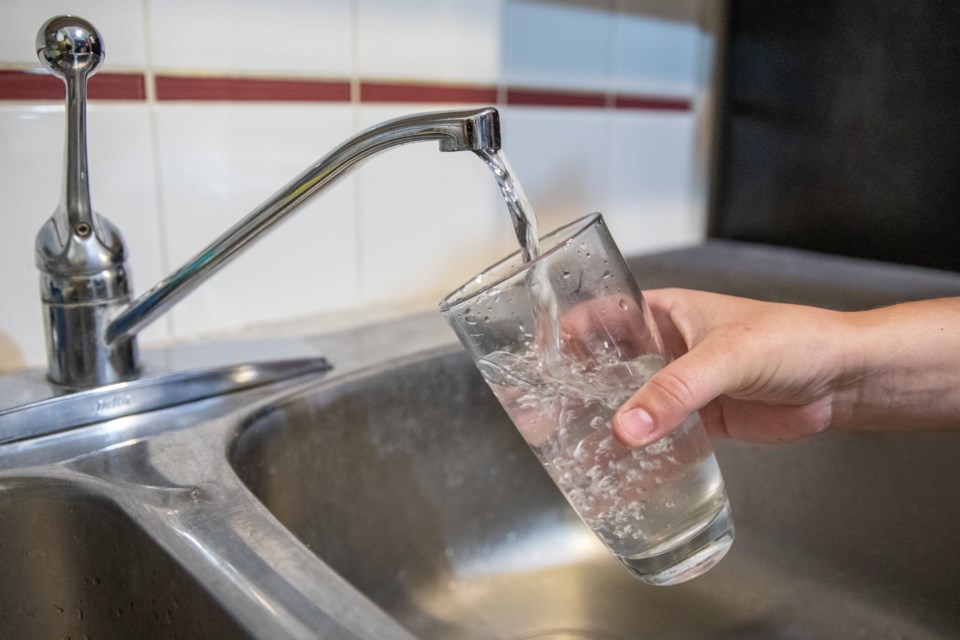CANMORE – Utility ratepayers in Canmore can expect to pay slightly more for sewer and water in 2021 after council approved increased rates in December.
During its regular business meeting last month, council voted to approve sewer and water rate amending bylaws that will increase rates by 3.4 per cent for residential customers – which equates to an annual overall increase of $20.31 – and between 3.1 to 3.4 per cent for commercial accounts.
Manager of public works Andreas Comeau presented the bylaws for approval and provided an overview of the changes during a finance committee meeting in November.
"When administration prepared the annual rate increase, there are a number of steps we go through," Comeau said. "We would take a look at our operating expenses and we would take a look at our capital plan and determine appropriate funding sources. Then we would also take a look at our growth assumptions.
"Once all of those are put into our utility rate model, then we click a button to determine how much revenue we need to make sure we meet those funding and reserve balances and then we calculate the rates."
He said the assumptions made in the calculations are usually conservative; however, that created challenges when looking at the 2021 rates.
Given what happened in 2020 with COVID and the change in water consumption behaviours, there were periods of time where businesses were shut down and people have been encouraged to work from home. Comeau said the 2021 rates were challenging to prepare as a result.
He said projections show a 10 per cent drop in commercial water use and a 10 per cent increase in residential use compared to 2019. While those two factors might somewhat cancel each other out, Comeau said, there is also an assumption in the model that there will be new growth each year.
"The number of [new] accounts this year right now is sitting at about 35," he said. "Typically we would have over 100 new accounts each year and 100 accounts can generate just in fixed rates alone, close to $75,000. So when those new accounts don't show up, and the corresponding consumption doesn't come with it, then it starts to have an impact."
That translates into an estimated three per cent, or $300,000 shortfall in projected revenues in 2020. The revenues needed in 2020 to fund the utility budget was $10.9 million.
Comeau said the reduced revenues means there will be a $300,000 decrease in the budgeted transfer to the water and wastewater reserves from 2020.
Other factors that were considered when calculating the 2021 rates included the need to increase the water reserve balance and the negotiation of a new utility service agreement with Epcor, which is contracted to manage the municipality's water and sewer services.
Comeau said a new contract with Epcor and fee structure is currently being negotiated, which means any implications for the 2021 budget will not be clear until after the budget approval process.
He said the expectation is that once the new agreement is in place, no adjustments would be needed to the budget given the factors used to calculate the 2021 rates.
Residential and commercial utility bills are split between water and wastewater. Both water and wastewater rates also have a split, with a fixed and variable rate used to calculate both.
Historically the split between water and wastewater on utility bills has been 32 to 68 per cent. However, Comeau said into the future, there are large water-related capital projects requiring more funding from that reserve, compared to wastewater.
That means administration is working to transition the split to increase the water revenue to 39 per cent of the total by 2025. According to the staff report, the transition "does not impact the customer directly," however it does mean the water and sewer rates will increase at different percentages.
In 2021, the fixed rate for water will increase by 7.5 per cent and wasterwater by 2.7 per cent. The variable rate will also change as a result, as will the split between the fixed and variable rate for water.
In 2020, 53 per cent of revenues came from fixed rate and 47 from variable. The shift would see 56 per cent of water utility rate revenues come from the fixed rate and 44 from the variable. That translates into the utility rates increasing by 5.5 per cent for water and 0.8 per cent for sewer.
Overall, it results in the 3.4 per cent increase to residential utility bill, or an increase of $20.31 over the next year.
The target for the water and sewer reserve account balances is $8.1 million and given these changes, administration expects that to to be reached by 2025.
As for the 2021 capital plan for water and wastewater utilities, there are five projects proposed with an estimated total cost of $5 million. That includes $330,000 for an update to the utility master plan.
That plan sets out all future capital projects required to meet the water and wastewater needs of the community, which includes the utility needs of all projected new development.
The last time the master plan was updated was in 2016 and Coun. Vi Sandford asked if the new plan would consider the future utility needs of the community through a climate change lens.
"That is having an impact on water and in particular the surface water, so we would certainly include a review of what the impact would be on the utility from climate change," Comeau said.




